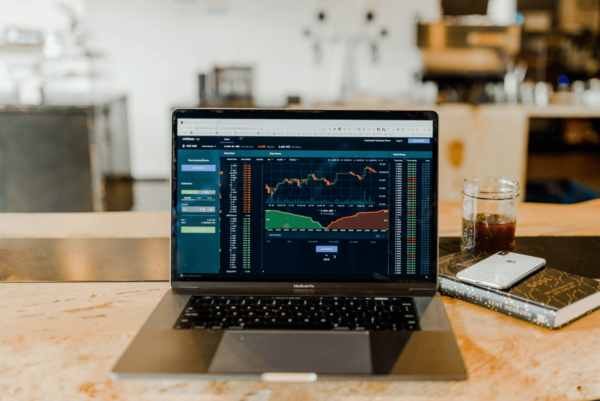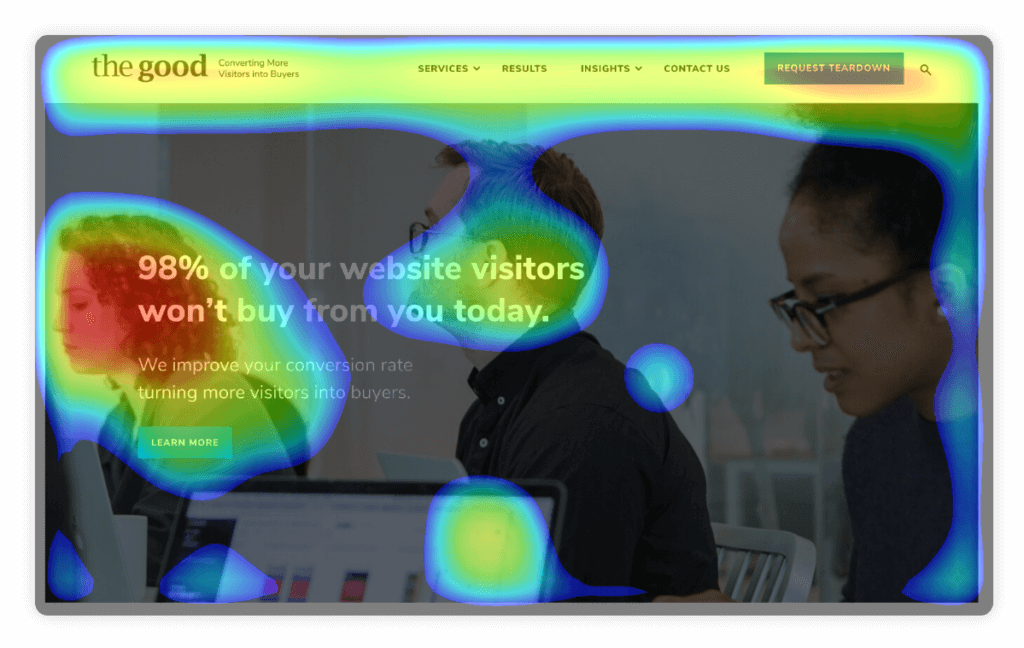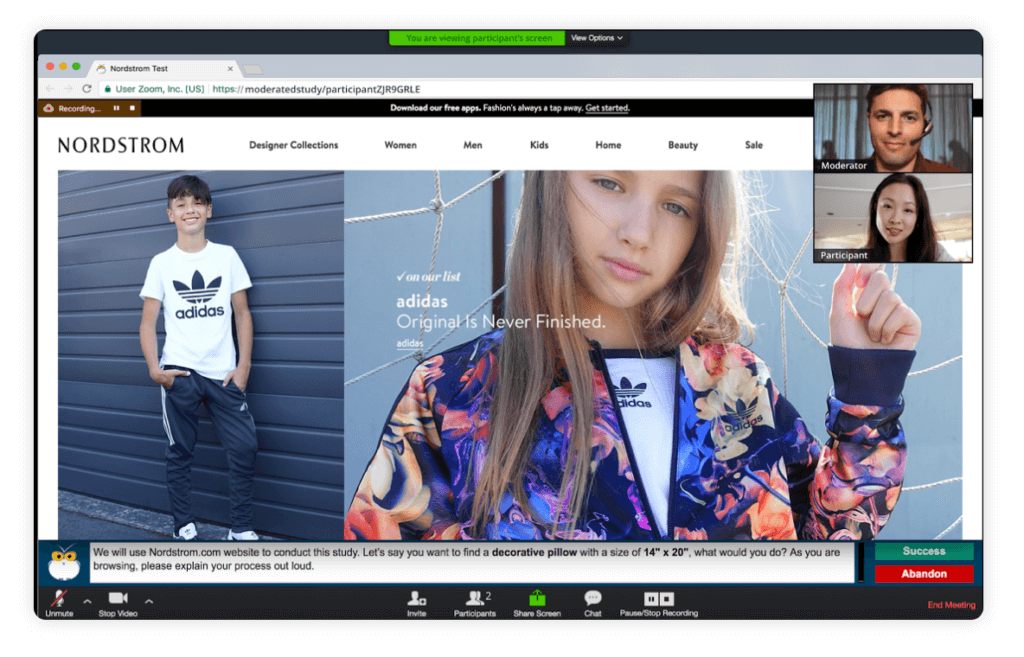
Conducting a Conversion Funnel Analysis of Your Ecommerce Website
A conversion funnel analysis plays an important role in helping pinpoint where visitors are dropping off of your website.
Imagine filling a bucket with water. No matter how much water you pour into the bucket, if there are holes, the water will leak out, and you can’t ever fill in the bucket to the top.
Now, looking at this through the lens of an ecommerce website, the bucket is your conversion funnel, and the water is the traffic you bring to your site. To fully leverage the potential that your ecommerce store has, you first have to conduct a conversion funnel analysis and fix the “holes” in it.
In this Insight, we’ll be focusing on how to conduct a conversion funnel analysis of your ecommerce website.
Here’s what we’ll be covering:
- What is a conversion funnel?
- Advantages of using funnel analysis
- How do you conduct a funnel analysis?
- How do you optimize the ecommerce conversion funnel?
What is a conversion funnel?
A conversion funnel is the journey a customer takes moving through different stages while navigating an ecommerce website. The number of users that visit your ecommerce store is not the same as the number of customers that make it to the end of the journey. Moving through phases (like browsing through products, adding a product to the cart, finalizing the checkout process, and paying for the product), at each step there is usually a dropoff in the number of people who move on to the next step.
That’s why visualizing the path to purchase looks like a funnel: The further the customer moves down the funnel, the narrower the funnel gets. Your job is to discover the weak points in the process and optimize as much as you can, thus increasing the number of conversions.
Looking at the ecommerce conversion funnel, we can divide it into five separate stages:
- Awareness: The first stage is the moment your prospects become aware of your product, and they visit your ecommerce store. Most often, this is a result of a social media ad, email marketing, recommendation from a friend, Google search result, or any other medium that brings visitors to your website.
- Consideration: After navigating through the home page, visitors turn to browse and visit multiple product pages. This is the moment when they are considering whether they should buy something from your store.
- Preference: The moment when they find something interesting and click the add to cart button is the moment they experience a desire to get your product. However, adding products to the cart while just browsing is now a normal part of the ecommerce shopping culture. You have to pave the way to more conversions.
- Intent: Visitors that reach the checkout page and start filling in information are those who are genuinely interested in buying a product. Dropping at this point can be caused by various reasons: high shipping costs, long checkout process, no guest checkout, distraction, etc.
- Action: The final stage of the ecommerce conversion funnel is when customers take action and buy your product. This is the stage where all the effort pays off, and your end goal should be bringing as many people as possible to this stage.
Advantages of using funnel analysis
Conducting a funnel analysis will pay dividends in the long run because by using this method to study the flow and behaviors of visitors, ecommerce merchants can gather key insights and identify essential areas for improvement.
Here’s how:
Identify performance & discover leaks
One of the biggest advantages of performing a funnel analysis is the ability to measure success and discover dropoffs. The first step towards fixing any bottlenecks is having the right knowledge of what works and what needs to be fixed. Companies that are aware of the leaks in the funnel are in a much better position as they know what are the improvement areas that they need to prioritize.
Improve conversion rates
The ultimate goal of every ecommerce business is to increase the conversion rate. Even though you can make many minor adjustments based on benchmarks and best practices, having real-time data about the performance of your online store is a great way to identify the most effective tactics to improve your conversion rate.
Create best practices for the future
Customer behavior is different across product categories. That’s why being able to create your own best practices to measure against is a great way to simplify future decisions. Using proven methodology from your home page and your product pages all the way to the end of the checkout process, will save you time, money, and resources.
Enjoying this article?
Subscribe to our newsletter, Good Question, to get insights like this sent straight to your inbox every week.
Make data-driven decisions
When businesses have such advanced tools at hand, making decisions based on gut-feeling can put your company at risk. If you understand why visitors drop off at every stage of the buyer journey, you’ll be able to make funnel optimization based on data. This will also empower you to measure incremental improvements and observe how numbers change as you make tweaks in the ecommerce sales funnel.
How do you conduct a funnel analysis?
Now that you’re aware of the benefits of ecommerce funnel analysis, let’s next talk about the step by step process itself.
1. Map the ideal buying process
If you don’t know where you’re going, any road will take you there. Not having a clear direction and a goal in mind will lead you…well, nowhere. That’s why the first step of conducting a funnel analysis is mapping the ideal buying process. When you know how you like the best case scenario to look like, it will be much easier to understand what are the areas of improvement you need to focus on. Start by defining goals.
2. Monitor the right KPIs
One of the most common pitfalls when it comes to funnel analysis is focusing on the wrong metrics. Instead of wasting your time on numbers that don’t have a direct impact on your conversion rate, make sure to look up to indicators that make a real difference.
Many businesses find themselves trapped by analyzing so many irrelevant metrics that they end up missing the big picture. Don’t get distracted by vanity metrics like site traffic and time on site, but rather focus on KPIs that matter like bounce rate, cart abandonment rate, and conversion rate.
3. Understand user behavior
Understanding customers’ behavior is at the core of every successful ecommerce business. To do so, companies should rely on historical data and customer surveys. The tools that can help you build knowledge for your prospects and clients include two main categories: user behavior analysis and user experience testing.
Analytics analysis
The easiest way is to start with what you already have. Before testing different scenarios, you should be looking at the way your customers behave at the moment. User behavior analysis means scrutinizing data to get more in-depth knowledge of the reasons behind high drop-offs. This includes tools like:
- Heatmaps: Heatmaps are a data visualization technique that lets you monitor clicks, movements, and scrolls of your visitors on the website. Using heatmaps, you can spot unusual behavior, how far your visitors scroll, and what they ignore. The name itself tells you that with this tool, you can identify hot and cold elements of your ecommerce website and decide on further steps.

- Session recordings: Another user behavior analysis tool that companies have at disposal is browsing through unique user sessions of real website visitors. Remote-monitored session recordings let you capture visitors’ behavior and later analyze their buyer journey. This is a great opportunity to understand what roadblock visitors face on your high-exit pages.

User experience testing
Besides analyzing user behavior, companies can test different aspects and optimize the journey based on the results. Unlike heatmaps and session recordings where you analyze previous sessions, the following three tools rely on getting real-time data or testing different scenarios.
- Surveys: Another great way to collect qualitative information is by using surveys and simply asking users about their opinion and what’s stopping them from buying your product. There’s a whole science behind asking the right survey questions, but when done right, the answers can be an excellent base for future improvements.
- Card sorting: One of the most popular UX testing methods is using cards to evaluate and design the information flow of a website. Allowing users to organize content in rows and columns will help you understand how they think and how they navigate through pages. Looking through the user’s eyes will give you answers on how to organize elements and create a site hierarchy that resonates with users.
- A/B testing: Probably one of the most frequently used UX testing tools for measuring the impact of UX design changes on the ecommerce conversion funnel is A/B testing. Instead of overwhelming with too many experiments, making small improvements over-time as a result of A/B tests is the easiest way to make changes that have a positive impact on your online store.
4. Identify bottlenecks at each step of the funnel
One of the key aspects of a successful funnel analysis is an end-to-end identification of drop-offs and bottlenecks. If you want to create a healthy ecommerce funnel, you have to be aware that you should make improvements at each stage of the journey. Doing an overall analysis will show red flags and areas in the user experience that have the biggest room for improvement.
5. Use funnel comparison for in-depth analysis
Context is everything in website analysis. There’s a huge difference in user behavior depending on demographic data. Being able to make conclusions on a more analytical level is crucial for your further growth. Besides this, you will notice significant discrepancies in the path to purchase between new and returning visitors. Having all these aspects in mind will give you a different perspective and help you make better optimization decisions.
How do you optimize the ecommerce conversion funnel?
The actions that a business should take based on an ecommerce conversion funnel analysis vary a lot. However, these seven best practices can help you get started:
- Bring relevant traffic: First things first. If you want a properly working funnel, you have to make sure that you’re bringing relevant traffic to your website. Make sure to use social media targeting, clean your mailing lists, and focus on the right SEO keywords to reach the customers that will be interested in your products. Otherwise, you’re only wasting time and money.
- Make sure your pages are easy to navigate: The average page visit lasts less than one minute, most typically between 10 and 20 seconds. If visitors are confused by your website’s navigation structure, they’ll go to your competitor’s site to find what they need.
- Create engaging product pages: The best way to get your visitors’ attention is to create an engaging user experience with high-quality product images, 360-degree spins, in-context imagery, videos, product recommendations, reviews, and user-generated content. In today’s attention economy, focusing on rich merchandising features can give you a significant competitive advantage.
- Decrease cart abandonment with exit-intent triggers: According to Statista, in March 2020, 88% of online shopping orders were abandoned. Using exit-intent pop-ups, you can get another chance to pursue customers to finish the purchasing process. Alternatively, you can capture their email addresses, which opens a great opportunity for abandonment cart emails.
- Optimize the checkout process: Two out of the top five reasons for cart abandonment are related to the checkout process, shows data from Statista. Not having a guest checkout option (28%) and too long and complicated checkout process (21%) are the two biggest pain points, right after high shipping costs (50%). Designing a short and straightforward checkout process can significantly increase your conversion rate. Make sure to offer a guest checkout option but, at the same time, offer an incentive or a personalized experience to motivate customers to create an account.
- Include multiple payment options: Another reason for drop off is not having enough payment options. Customers nowadays expect convenience and flexibility. Not being able to make an online purchase because of the payment method can lead to frustration and negative user experience. Adding multiple options will encourage visitors to go all the way to the end of your conversion funnel.
- Get feedback, optimize, repeat: Solving user experience issues is not a one-time battle. It’s rather a journey that requires commitment and incremental improvement. Tracking your performance over time is essential for growth. So instead of making funnel optimization once and call it a day, commit to getting feedback, optimizing, and doing it all over again. Continually improving ecommerce sales and conversion rates will help you move the needle.
Conversion funnels = ecommerce growth
Conducting a conversion funnel analysis requires a lot of preparation and knowledge. However, it doesn’t need to be daunting. With the help of experts, you’ll be able to focus on the right indicators and unveil the biggest pain points. That way, you’ll set the foundation for future growth.
Ready to make the first step towards fixing your conversion funnel? Get your free landing page teardown and discover the top conversion blockers costing you ecommerce sales.

About the Author
Kaleigh Moore
Kaleigh Moore is a researcher, freelance writer, and founder of Lumen Ventures, which helps to educate online sellers on how to grow their businesses across the web. She’s a longtime entrepreneur, who’s run profitable businesses with zero paid advertising. Kaleigh’s been featured in Entrepreneur, Inc. Magazine, Kissmetrics, and SumoMe.